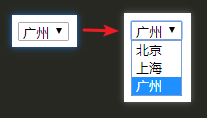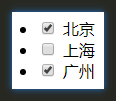Django Form组件
一、form组件功能
form 组件的主要功能如下:
- 生成页面可用的HTML标签
- 对用户提交的数据进行校验
- form表单提交时,数据出现错误,返回的页面中仍可以保留之前输入的数据
二、使用form组件实现登录校验
views.py
from django.shortcuts import render from django.shortcuts import HttpResponse from django import forms class LoginForm(forms.Form): username = forms.CharField( label="账号", min_length=2, max_length=16, required=True, error_messages={ "min_length": "用户名最少2位", "max_length": "用户名不能超过16位", "required": "请输入用户名", "invalid": "格式错误" } ) password = forms.CharField( label="密码", min_length=6, required=True, error_messages={ "min_length": "密码最少6位", "required": "请输入密码", } ) def login(request): form_obj = LoginForm() if request.method == "POST": form_obj = LoginForm(request.POST) if form_obj.is_valid(): return HttpResponse("登录成功") return render(request, "login.html", {"form_obj": form_obj})
login.html(三种渲染方式)
方式1(推荐)
<form action="" method="post" novalidate> {% csrf_token %} <div> <label for="{{ form_obj.username.id_for_label }}">{{ form_obj.username.label }}</label> {{ form_obj.username }}{{ form_obj.username.errors.0 }} </div> <div> <label for="{{ form_obj.password.id_for_label }}">{{ form_obj.password.label }}</label> {{ form_obj.password }}{{ form_obj.password.errors.0 }} </div> <div> <label for="form_submit"></label> <input type="submit" id="form_submit" value="登录"> </div> </form>
方式2
<form action="" method="post" novalidate> {{ form_obj.as_p }} <p> <label for="form_submit"></label> <input type="submit" id="form_submit" value="登录"> </p> </form>
方式3
<form action="" method="post" novalidate> {% csrf_token %} {% for field in form_obj %} <div> <label for="{{ field.id_for_label }}">{{ field.label }}</label> {{ field }} </div> {% endfor %} <div> <label for="form_submit"></label> <input type="submit" id="form_submit" value="登录"> </div> </form>
三、Form组件
创建Form类时,主要涉及到 【字段】 和 【插件】,字段用于对用户请求数据的验证,插件用于自动生成HTML。
Django Form 内置字段:
Field required=True, 是否允许为空 label=None, 用于生成Label标签或显示内容 error_messages=None, 错误信息 {'required': '不能为空', 'invalid': '格式错误'} initial=None, 初始值 disabled=False, 是否可以编辑 widget=None, HTML插件 validators=[], 自定义验证规则 help_text='', 帮助信息(在标签旁边显示) localize=False, 是否支持本地化 label_suffix=None, Label内容后缀 show_hidden_initial=False, 是否在当前插件后面再加一个隐藏的且具有默认值的插件(可用于检验两次输入是否一致) CharField(Field) max_length=None, 最大长度 min_length=None, 最小长度 strip=True 是否移除用户输入空白 IntegerField(Field) max_value=None, 最大值 min_value=None, 最小值 FloatField(IntegerField) ... DecimalField(IntegerField) max_value=None, 最大值 min_value=None, 最小值 max_digits=None, 总长度 decimal_places=None, 小数位长度 BaseTemporalField(Field) input_formats=None 时间格式化 DateField(BaseTemporalField) 格式:2015-09-01 TimeField(BaseTemporalField) 格式:11:12 DateTimeField(BaseTemporalField)格式:2015-09-01 11:12 DurationField(Field) 时间间隔:%d %H:%M:%S.%f ... RegexField(CharField) regex, 自定制正则表达式 max_length=None, 最大长度 min_length=None, 最小长度 error_message=None, 忽略,错误信息使用 error_messages={'invalid': '...'} EmailField(CharField) ... FileField(Field) allow_empty_file=False 是否允许空文件 ImageField(FileField) ... 注:需要PIL模块,pip3 install Pillow 以上两个字典使用时,需要注意两点: - form表单中 enctype="multipart/form-data" - view函数中 obj = MyForm(request.POST, request.FILES) URLField(Field) ... BooleanField(Field) ... NullBooleanField(BooleanField) ... ChoiceField(Field) ... choices=(), 选项,如:choices = ((0,'上海'),(1,'北京'),) required=True, 是否必填 widget=None, 插件,默认select插件 label=None, Label内容 initial=None, 初始值 help_text='', 帮助提示 ModelChoiceField(ChoiceField) ... django.forms.models.ModelChoiceField queryset, 查询数据库中的数据 empty_label="---------", 默认空显示内容 to_field_name=None, HTML中value的值对应的字段 limit_choices_to=None ModelForm中对queryset二次筛选 ModelMultipleChoiceField(ModelChoiceField) ... django.forms.models.ModelMultipleChoiceField TypedChoiceField(ChoiceField) coerce = lambda val: val 对选中的值进行一次转换 empty_value= '' 空值的默认值 MultipleChoiceField(ChoiceField) ... TypedMultipleChoiceField(MultipleChoiceField) coerce = lambda val: val 对选中的每一个值进行一次转换 empty_value= '' 空值的默认值 ComboField(Field) fields=() 使用多个验证,如下:即验证最大长度20,又验证邮箱格式 fields.ComboField(fields=[fields.CharField(max_length=20), fields.EmailField(),]) MultiValueField(Field) PS: 抽象类,子类中可以实现聚合多个字典去匹配一个值,要配合MultiWidget使用 SplitDateTimeField(MultiValueField) input_date_formats=None, 格式列表:['%Y--%m--%d', '%m%d/%Y', '%m/%d/%y'] input_time_formats=None 格式列表:['%H:%M:%S', '%H:%M:%S.%f', '%H:%M'] FilePathField(ChoiceField) 文件选项,目录下文件显示在页面中 path, 文件夹路径 match=None, 正则匹配 recursive=False, 递归下面的文件夹 allow_files=True, 允许文件 allow_folders=False, 允许文件夹 required=True, widget=None, label=None, initial=None, help_text='' GenericIPAddressField protocol='both', both,ipv4,ipv6支持的IP格式 unpack_ipv4=False 解析ipv4地址,如果是::ffff:192.0.2.1时候,可解析为192.0.2.1, PS:protocol必须为both才能启用 SlugField(CharField) 数字,字母,下划线,减号(连字符) ... UUIDField(CharField) uuid类型(UUID是根据MAC以及当前时间等创建的不重复的随机字符串)
Django Form 内置插件:
TextInput(Input) NumberInput(TextInput) EmailInput(TextInput) URLInput(TextInput) PasswordInput(TextInput) HiddenInput(TextInput) Textarea(Widget) DateInput(DateTimeBaseInput) DateTimeInput(DateTimeBaseInput) TimeInput(DateTimeBaseInput) CheckboxInput Select NullBooleanSelect SelectMultiple RadioSelect CheckboxSelectMultiple FileInput ClearableFileInput MultipleHiddenInput SplitDateTimeWidget SplitHiddenDateTimeWidget SelectDateWidget
常用选择插件:
password(额外加的)
from django import forms from django.forms import widgets class TestForm(forms.Form): password = forms.CharField( label="密码", min_length=6, required=True, widget=widgets.PasswordInput(attrs={"class": "c1"}, render_value=True) )
单选radio,值为字符串(2种方式)
class TestForm(forms.Form): gender1 = forms.ChoiceField( choices=((1, "男"), (2, "女"),(3, "保密")), initial=3, widget=widgets.RadioSelect ) gender2 = forms.CharField( initial=3, widget=widgets.RadioSelect(choices=((1, "男"), (2, "女"), (3, "保密"),)) )

单选select,值为字符串(2种方式)
class TestForm(forms.Form): addr1 = forms.ChoiceField( choices=((1, "北京"), (2, "上海"), (3, "广州")), initial=3, widget=widgets.Select ) addr2 = forms.CharField( initial=3, widget=widgets.Select(choices=((1, "北京"), (2, "上海"), (3, "广州")),) )

多选select,值为列表
class TestForm(forms.Form): addr = forms.MultipleChoiceField( choices=((1, "北京"), (2, "上海"), (3, "广州")), initial=[1,3,], widget=widgets.SelectMultiple )

单选checkbox
class LoginForm(forms.Form): keep = forms.ChoiceField( label="是否记住密码", initial="checked", widget=widgets.CheckboxInput() )

多选checkbox,值为列表
class TestForm(forms.Form): addr = forms.MultipleChoiceField( choices=((1, "北京"), (2, "上海"), (3, "广州")), initial=[1, 3,], widget=widgets.CheckboxSelectMultiple() )

注意:
在使用选择标签时,需要注意choices的选项可以从数据库中获取,但是由于是静态字段(获取的值无法实时更新),那么需要自定义构造方法从而达到此目的。
方式1(推荐)
# appxx/models.py from django.db import models class User(models.Model): id = models.AutoField(primary_key=True) name = models.CharField(max_length=16)
# appxx/myform/form.py from django import forms from django.forms import widgets from appxx import models class TestForm(forms.Form): user_id = forms.IntegerField( widget=widgets.Select() ) def __init__(self, *args, **kwargs): super(TestForm, self).__init__(*args, **kwargs) self.fields["user_id"].widget.choices = models.User.objects.values_list("id", "name")
# appxx/views.py from django.shortcuts import render from appxx.myform.form import TestForm def test(request): form_obj = TestForm() return render(request, "test.html", {"form_obj": form_obj})
<p>{{ form_obj.user_id }}</p>
当数据库发生数据变化时,再次请求时即可得到数据库最新数据,不必重新运行项目。

方式2(不推荐)
使用django提供的 ModelChoiceField 或 ModelMultipleChoiceField 字段来实现。但是,依赖models中的 __str__方法。
具体区别参考上面代码
# appxx/models.py from django.db import models class User(models.Model): id = models.AutoField(primary_key=True) name = models.CharField(max_length=16) def __str__(self): # 依赖 __str__ 方法 return self.name
# appxx/myform/form.py from django import forms from appxx import models from django.forms import models as form_models class TestForm(forms.Form): user_id = form_models.ModelChoiceField( initial=3, queryset=models.User.objects.all(), to_field_name="id" )

如果没有 __str__ 方法,将显示如下。

四、校验相关
方式1
from django import forms from django.forms import widgets from django.core.validators import RegexValidator class RegisterForm(forms.Form): phone = forms.CharField( label="手机号码", required=True, widget=widgets.TextInput, error_messages={"required": "请输入手机号码"}, validators=[ RegexValidator(r"(13|14|15|17|18|19)[0-9]{9}", "手机号码格式有误"), ], )
方式2
import re from django import forms from django.forms import widgets from django.core.exceptions import ValidationError # 自定义校验规则 def phone_validate(value): re_phone = re.compile(r"(13|14|15|17|18|19)[0-9]{9}") if not re_phone.match(value): raise ValidationError( "手机号码格式有误") # 使用自定义校验规则 class RegisterForm(forms.Form): phone = forms.CharField( label="手机号码", required=True, widget=widgets.TextInput, error_messages={"required": "请输入手机号码"}, validators=[phone_validate,], )
方式3(form组件的钩子)
# 实例化时(form_obj = XxForm(request.POST)) self.fields = { "username":"字段规则对象", "password":"字段规则对象", } # 校验时(if form_obj.is_valid():) self._errors = {} self.cleaned_data = {}
from django import forms from django.forms import widgets from django.core.exceptions import ValidationError class RegisterForm(forms.Form): username = forms.CharField( label="用户名", required=True, max_length=16, widget=widgets.TextInput, error_messages={ "required": "请输入登录用户名", "max_length": "用户名过长" }, ) password = forms.CharField( label="密码", required=True, min_length=6, widget=widgets.PasswordInput, error_messages={ "required": "请输入密码", "min_length": "输入最少6位" }, ) re_password = forms.CharField( label="确认密码", required=True, widget=widgets.PasswordInput, error_messages={ "required": "请输入确认密码", }, ) # 局部钩子 def clean_username(self): value = self.cleaned_data.get("username") if "傻逼" in value: raise ValidationError("敏感词语!") return value # 全局钩子 def clean(self): password = self.cleaned_data.get("password") re_password = self.cleaned_data.get("re_password") if password != re_password: self.add_error("re_password", ValidationError("两次密码不一致!")) raise ValidationError("两次密码不一致!") return self.cleaned_data
五、补充
批量添加样式
class RegisterForm(forms.Form): username = forms.CharField( label="用户名", required=True, max_length=16, widget=widgets.TextInput, error_messages={ "required": "请输入用户名", "max_length": "用户名过长" }, ) ... def __init__(self, *args, **kwargs): super(RegisterForm, self).__init__(*args, **kwargs) for field in iter(self.fields): self.fields[field].widget.attrs.update({ "class": "form-control" })

